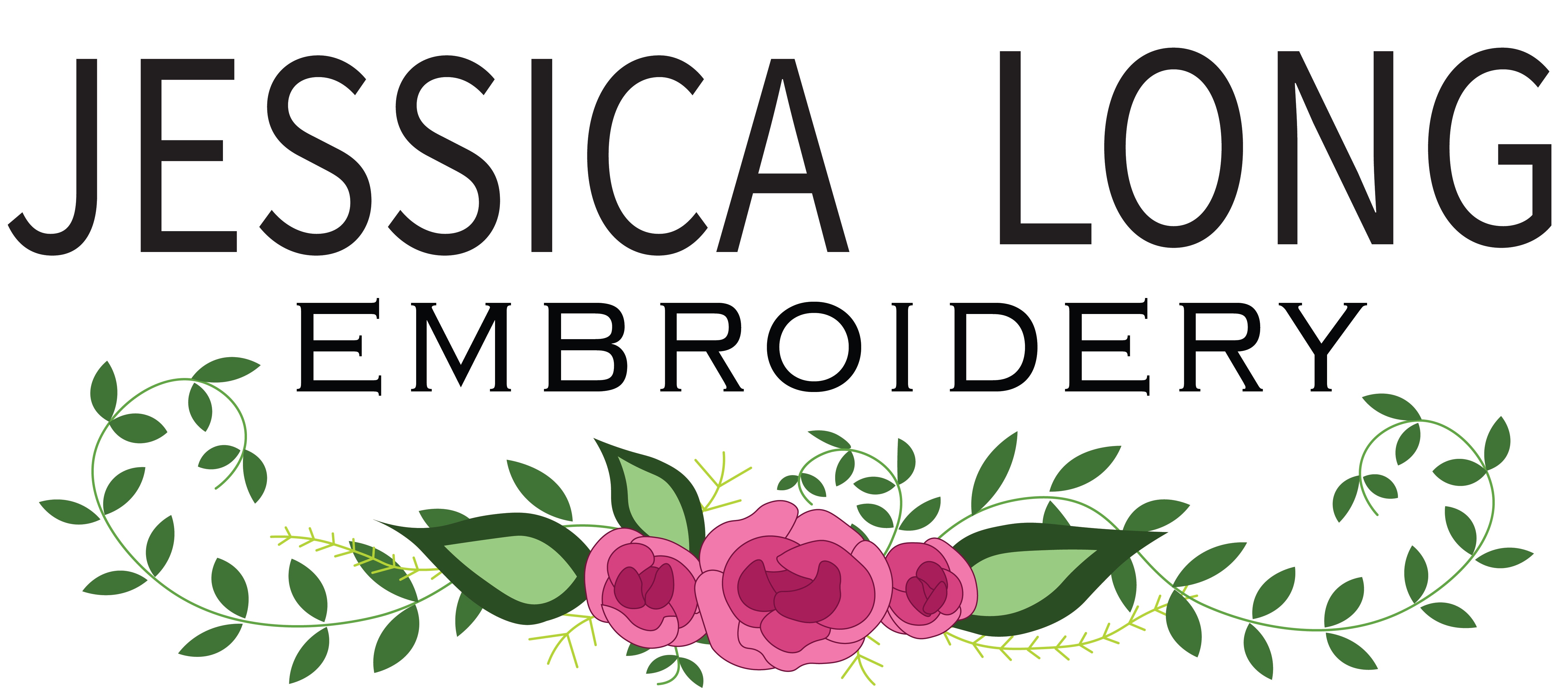Fishbone stitch is a favorite for leaves but it is a fairly versatile stitch that can be used for filling other shapes. Before getting into some fun variations here is a little refresher diagram and video.
Begin with a straight stitch down the center of the leaf, reaching about 1/3 of the way down the shape. Use diagonal straight stitches to fill the shape. Come up on the right at A, down at B, then switch to the other side by coming up on the left at C and down at D. Continue to alternate sides, with the straight stitches crossing each other at the center line of the shape.

Stitch Angle
In general the angle of my straight stitches widens towards horizontal as I work my way down the leaf. You can also play with more sharp (closer to parallel with the center vein) and more flat (closer to horizontal to the center vein) angles to get different looks.

If you have a curved leaf shape you want to fill you will need to compensate by compressing the stitching on one side and increasing the distance between stitches on the other.

Fishbone Variations
Now let's look at fishbone versus raised (or overlapping) fishbone stitch. In the original version the stitches need only be long enough to overlap the previous stitches. With raised fishbone we extend the stitches all of the way to the edge of the shape we are filling. Once complete this stitch has more volume at the base than the original fishbone.
Raised fishbone stitch. Begin with a straight stitch down the center of the leaf from A to B. Next, work down the shape with diagonal straight stitches that extend the full length of the shape. Come up at C, go down at D, then stitch to the other side by coming up at E and going down at F. Continue to alternate sides, with the straight stitches crossing each other at the center line of the shape.

Open fishbone stitch. Begin with a vertical straight stitch from A to B. Next, create straight stitches crossing over this center line, working down the shape. Come up at C, down at D, then switch to the other side by coming up at E and down at F. Continue to create these crossed pairs of straight stitches down the guideline, leaving space between each set. Keep the stitch length and angle consistent (fig. 1) or work them within a guideline (fig. 2).

Here's a video showing how to work the fishbone stitch in a shape with cutouts using variegated floss:
Next, here's a little more fun using two strands of floss in different colors. I tried to be consistent with my stitch direction in this video.
